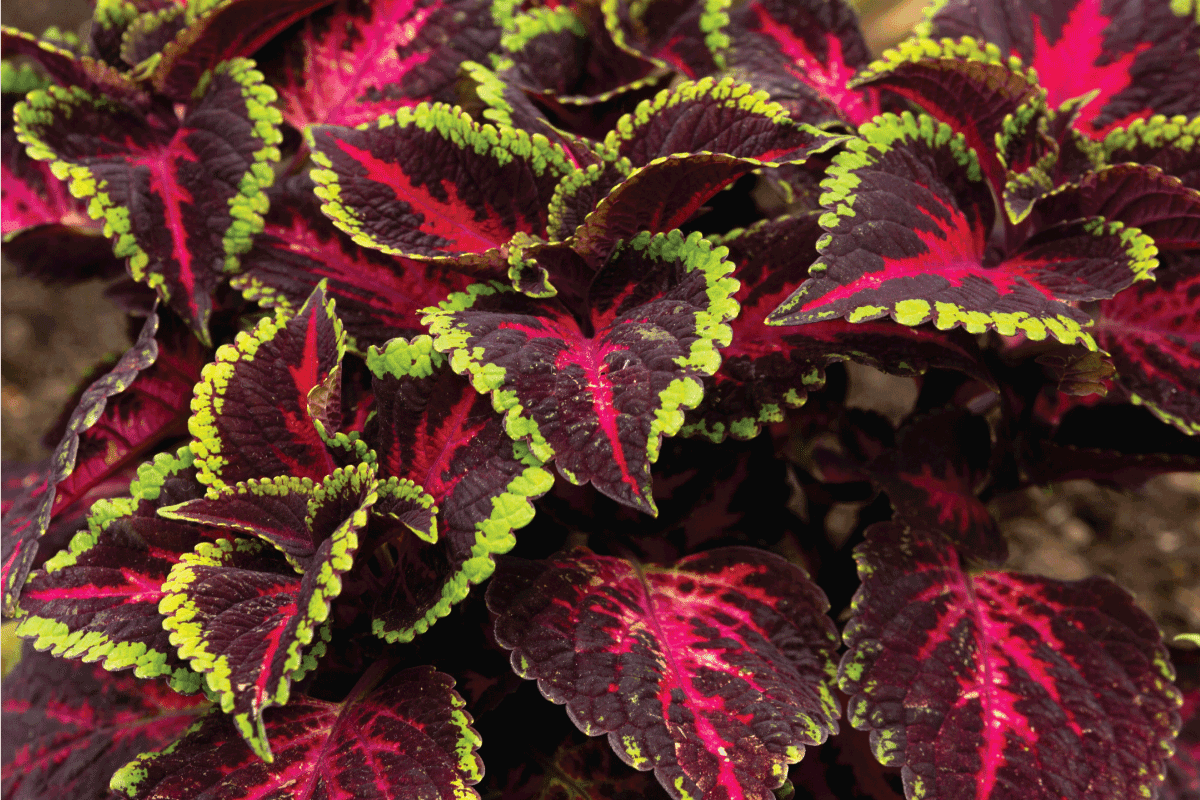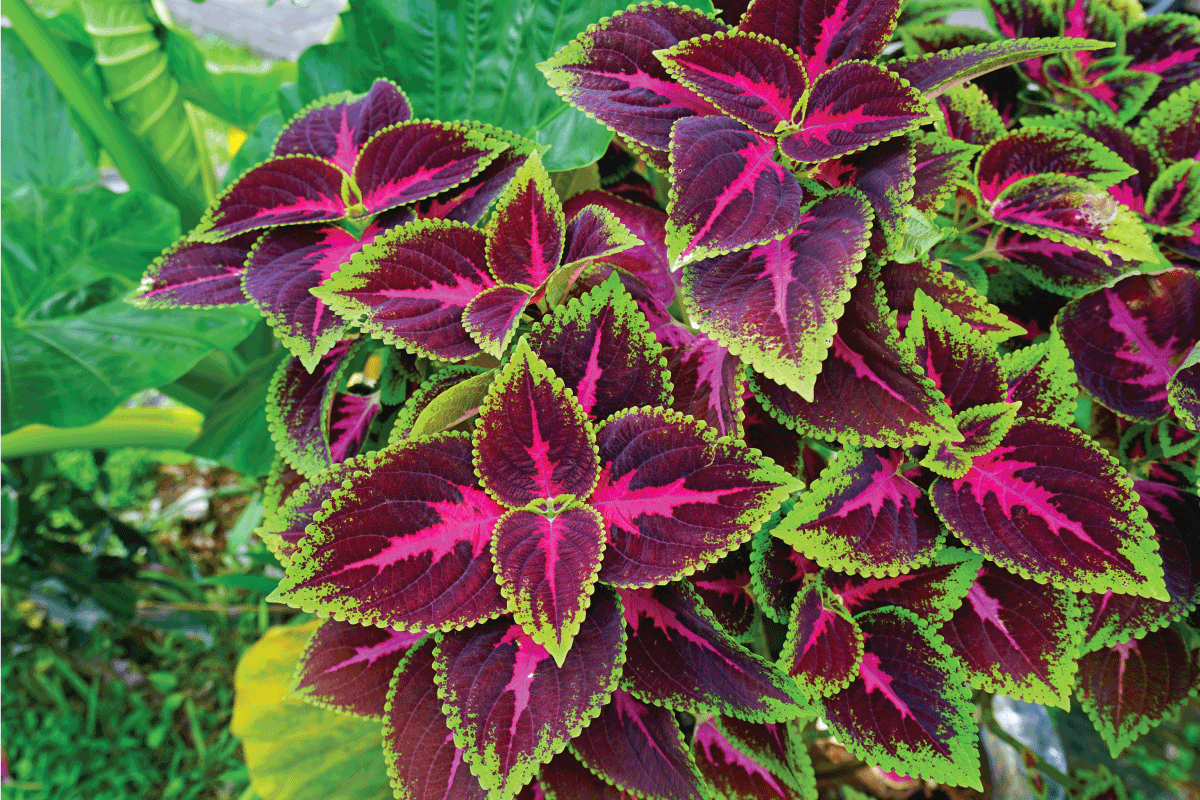Coleus is a plant that provides attractively pleasing foliage. If you want to make your garden eye-catching, you can combine coleus with other plants. But one thing most gardeners and homeowners ask is if they come back every year. And after much research, we have finally determined the answer.
Yes, coleus is a perennial that can come back yearly. Although the stems and foliage of coleus die back during winter, its roots remain alive and kicking. It makes the coleus regenerate the successive year.
You don't have to worry about growing a coleus plant, even if you are an amateur, because you can still quickly grow it. However, you can only do that if you know how to do it properly. So, we encourage you to keep reading to learn the growing requirements of coleus. Additionally, we'll discuss the two methods on how to plant it. Let's delve into the details!
Will Coleus Come Back Every Year?
Coleus, in its native tropical environment, is a perennial plant that can grow year after year. The plant's stems may wither in the winter, but its roots will remain alive underground. In this way, perennials might regrow the following season.
However, coleus is typically an annual in many parts of the United States, and its death over the winter months is the norm, so you need to replant them annually.

How Fast Is The Growth Rate Of Coleus Plant?
Coleus can develop immediately to its full size. It can grow as high as 36 inches in a single season.

How To Properly Care For Coleus
The coleus plant has unusual and eye-catching leaf patterns, such as spots, splashes, or edging. This versatile plant will thrive even not tended by a green thumb.
Check the details below about how to care for your coleus plants properly.

What Is The Best Soil For Coleus?
You should provide coleus with soil that is rich, continuously moist, loose, and well-draining.
Before you plant your coleus in the soil, it is advisable to incorporate organic material, such as perlite or compost.
Additionally, if you plan to plant your coleus in pots, you can use a good-quality loose potting mix. And select a pot with enough drainage holes. Keep in mind that you need to provide them with slightly acidic to neutral soil, preferably with a pH level of 6 to 7.
Click here to check out this perlite on Amazon.
How Much Should I Water Coleus?
Know that coleus doesn't want soggy soil because it can lead to root rot. So, providing your plant with adequate water is advisable, just enough to make it consistently moist.
Long periods of heat can reduce the coleus' growth. In this case, expect the foliage to become brown, especially on its borders.
Before you water the coleus plants, allowing the soil to dry out a little between each watering session would be best. Just wet the soil for an inch if you notice that it is already dry to the touch.
Moreover, if you wish to maintain the soil's moisture, mulch would greatly help. However, you must keep in mind that you should never use cedar mulch because it can harm or kill your coleus plants. Lastly, it is a must to keep off the mulch from the stems of the plant to prevent slugs and rot.
Does Coleus Need Full Sun?

Most species of coleus do better in the broad sun.
Traditional seed-grown coleus thrives in partial to full shade, but modern cultivars thrive in full sun. Leaves of most traditional coleus cultivars can brown and lose their color if exposed to direct sunlight for too long. If you live in a particularly hot region, coleus thrives in the early sun, but you should protect them from the afternoon sun.
Throughout the warmer, brighter months, plants planted in pots inside your house should receive plenty of light from indirect sunshine. On the other hand, during the winter, they may benefit from exposure to filtered sunlight. The need for illumination is minimal, but they must meet it.
Should I Fertilize Coleus?
If you have already provided your coleus with rich soil, you wouldn't need to give them fertilizer anymore. On the other hand, if the soil is not rich enough, you should provide them with a slow-release fertilizer.
Keep in mind that if you wish to achieve an excellent color for your coleus, you need to go easy on feeding them with fertilizer.
For potted coleus, feeding them with fertilizer every month is advisable, and you should use water-soluble ones. Potted plants require more fertilizer than those at garden beds because when you water them, the fertilizer tends to wash away by water.
What Is The Ideal Temperature For Coleus?
If you have coleus plants indoors, it would be best not to let them stay near cold or drafty areas or an air conditioner. In drier climates, coleus will surely love and benefit from the humidity from the bathroom or humidifier.
In the spring, you should wait for the temperature to warm or reach 70 degrees Fahrenheit before bringing your coleus in containers outside.
What are The Pests And Diseases That Can Harm Coleus?

You should be aware of several pests when it comes to your coleus. And these are the following:
- rabbits
- groundhogs
- aphids
- mealybugs
- spider mites
- whiteflies
- slugs
Moreover, diseases can't easily affect coleus. However, if the weather is too cool and wet, expect that mildew or other fungal infections might occur. It might also experience fungal stem and root rot if you let it waterlogged.
How To Prune Coleus?
Once you notice that your coleus has reached six inches in height, pinch off the growing tips to encourage full, bushy growth. To stimulate the plant to produce more leaves rather than flowers and seeds, pinch off the developing flower clusters.
Without regular pruning, plants become spindly and lose their foliage fullness. Plants with a lot of stems and leaves may benefit from more direct sunlight. Most houseplants have this condition in the winter; to remedy the situation, you need to expose them to additional light, whether natural or artificial.
Click here to check out this pruning shear on Amazon.
How To Properly Grow Coleus Plants From Seeds?
You should start seeding coleus indoors at least eight weeks before your previous frost date, especially if you want to replant them in your garden.
Taking care of a coleus plant from seed is simple. The seeds may need up to 21 days to sprout. Once you notice some seedlings emerge, they will need over three weeks of warm temperatures to reach total growth.

Below are the guidelines you should follow when planting coleus from seeds:
- You should fill a tray or container with a good-quality potting mix and carefully scatter seeds over it.
- Spread a bit of soil above the coleus seeds to cover them.
- It is advisable to enclose the tray with a plastic bag and place it in a warm area.
- Wait for two weeks until the seeds germinate.
- After noticing the new germination, removing the plastic bag and letting the seeds grow in that spot would be best. Additionally, you should maintain slightly wet soil.
- Once the seedlings have developed two sets of true leaves, it is time to transplant them into individual containers. Keep your coleus plants warm and moist until it is time to plant them outside.
- Before putting seedlings in the garden, you should give them time to acclimate to outside conditions.
How To Propagate Coleus By Cuttings?
If you wish to know how to multiply your coleus plants using cuttings, you can check these out!

- Prepare sterilized and sharp pruning shears. Remove at least six inches of a section of stem directly under a leaf node. Take off all of the leaves that are on the bottom part of the cutting.
- Dip the cutting in a rooting hormone.
- Plant the cutting in a good-quality and moist potting mix and ensure that the dirt comes to the visible leaf nodes.
- Put a plastic bag over the cutting, but ensure it doesn't touch the plant. It is to create a mini alternative greenhouse.
- Bring the enclosed plant to a warm and bright location. Leave it for at least two weeks until you see new developing roots.
- Once you see new roots, you can remove the plastic and let the coleus stay in that place.
You should take lots of cuttings of the more exotic cultivars just to prepare, especially if they are slow to root.
Click here to check out this rooting hormone on Amazon.
Wrapping Everything Up

Knowing coleus well and how to properly grow them is one great idea. It is true, especially if you wish to achieve a bright and appealing coleus for your garden. Follow everything discussed in this post and expect a vigorous and healthy coleus plant.
You have finally made it to the end! We hope you find this post helpful. If you still have additional concerns, please feel free to reach out in the comments. And if you wish to continue reading, you can check these posts out!
How Cold Can Coleus Tolerate? [Will One Survive The Winter]?



